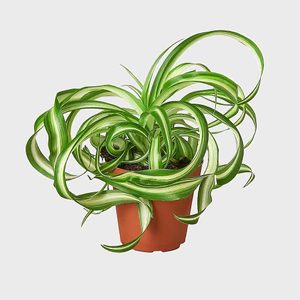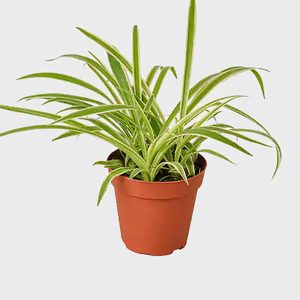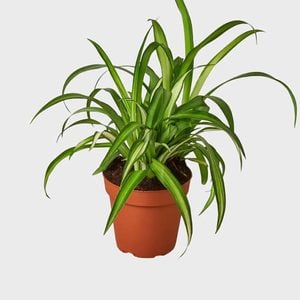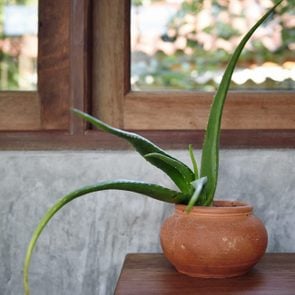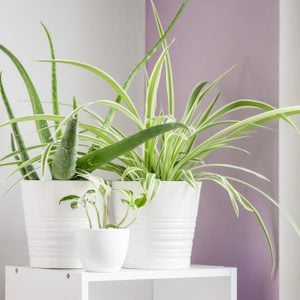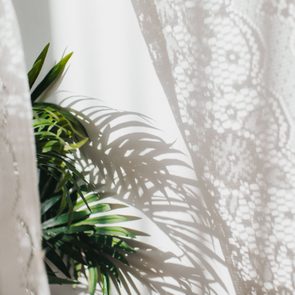How to Care for Spider Plants
Updated: Jan. 03, 2023
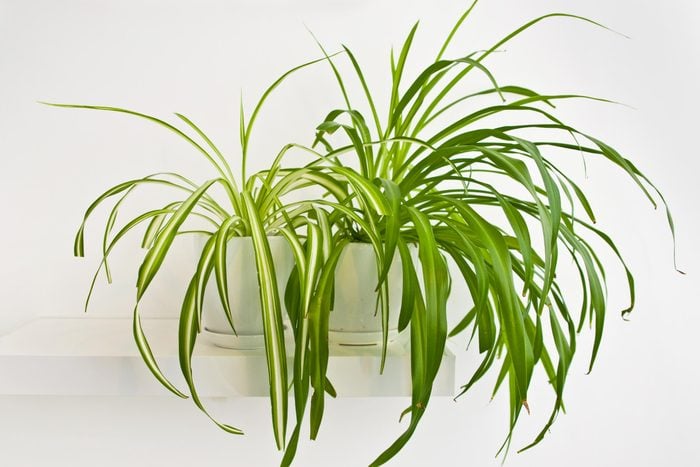
These hanging beauties are easy to look after, and they even grow their own family. Here's what to know about spider plant care.
Our editors and experts handpick every product we feature. We may earn a commission from your purchases.
Looking for a hanging plant to cheer up your home? If you’re in the market for low-maintenance indoor plants, this one’s your girl. Spider plants aren’t super needy about watering, and since they are low-light indoor plants, they don’t require a lot of sun. In other words, you don’t have to have a green thumb to master spider plant care. (Trust me on this: I’ve had my spider plant, Charlotte, for more than 25 years.)
Spider plants’ long, narrow leaves can be solid in color or have green-and-white stripes, and they drape beautifully over the edges of a hanging planter—although they will thrive as sitting plants too. And the very best part? They make their own babies! Well, there is a more technical way to explain that: “They create live plantlet clones through runners that they send out,” says horticulturist Christopher Satch, a plant consultant and professor with the New York Botanical Garden.
So if you are looking to buy plants online or shopping for indoor plants at a local store, here’s what you need to know about spider plant care.
| Botanical name | Chlorophytum comosum |
| Height | 1 to 2 feet |
| Sun exposure | Partial shade or shade |
| Soil type | Loamy, well-drained |
| Soil pH | Neutral |
| Toxicity | Nontoxic to dogs, nontoxic to cats |
Where to put a spider plant
Since they drape—and can grow quite full—these evergreen perennials are an obvious choice for hanging plants. But they aren’t hard-core sun worshippers, so you don’t need a spot that has rays of sunshine streaming in all day. “They need at least three hours of direct sun in a window,” says Satch. And if you give them a light drink every week or so, they’re not picky about humidity levels.
If you don’t have a place to hang your spider plants, they’ll work as windowsill plants, provided they won’t get direct sunlight all day long. A windowsill location will also provide room for the runners to trail down. Heads up: They may try to creep into other pots and plant their babies.
According to the American Society for the Prevention of Cruelty to Animals (ASPCA), they aren’t toxic to dogs or cats, so pet owners don’t have to be extra cautious about where the plants live.
Spider plant care
Soil
These plants can grow in a variety of soil types. “They’re considered invasive weeds in Australia, so you can literally grow them in anything,” says Satch, noting that regular potting mix does the trick. Spider plants prefer a neutral soil pH, but they will grow in slightly acidic or slightly alkaline soil too.
Water
Give your spider plant a light pour when the soil dries out, which Satch says can take anywhere from four to 10 days, depending on the conditions inside your home and the season. Overwatering can cause root rot, which may eventually kill the plant.
Fertilizer
These plants like a moderate amount of feeding. Satch says to fertilize your spider plant once a month with a liquid product like Dyna-Gro. Too much fertilizer can cause brown leaf tips, but too little fertilizer will result in weak growth.
Types of spider plants
There’s not a huge difference in how they look or grow, although leaves may be variegated or not, but there are several varieties of spider plants:
Common pests
Satch says to be on the lookout for spider mites, thrips and mealybugs. All of these critters, which can be very destructive, can be controlled best with insecticidal soaps.
What it means if the leaves of your spider plant have brown tips
If you notice your plant has brown tips on its leaves, it’s probably because its soil is old or sour, or you may have a foliar infection. (Foliar infection is a technical term for a plant disease that impacts the leaves.)
“These plants do not care about humidity, so that’s not what’s causing the brown tips,” says Satch. “If the damage was from humidity, every leaf on the plant would be affected in exactly the same way, and the tips would be black or white.”
Refresh the soil if it’s been a while since you’ve swapped it out. Foliar diseases can be tricky to treat.
How to propagate spider plants
If you want to grow new plants from your original one, spider plants do most of the work for you. The parent plant sends out a shoot that grows small, white flowers that eventually turn into young plantlets that you can transplant. “Push one of their runners into soil, and they will propagate themselves,” says Satch.
The “baby” plant should root in two or three weeks if kept in moist soil, and then it can be safely cut from the parent. Continue to grow them in the smaller pots and transplant them to larger pots as they get bigger. Next, learn about how to provide the right care for snake plants.
Get Reader’s Digest’s Read Up newsletter for humor, cleaning, travel, tech and fun facts all week long.
Source:
- Christopher Satch, horticulturist and professor with the New York Botanical Garden
- ASPCA: “Poisonous Plants”

